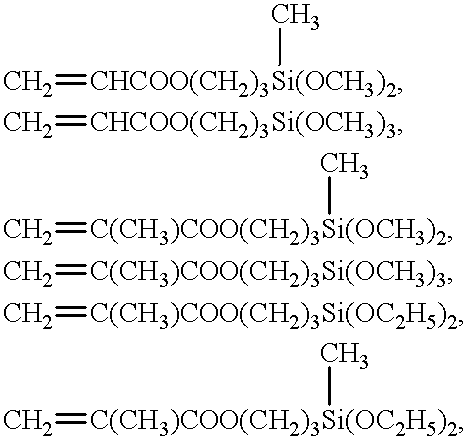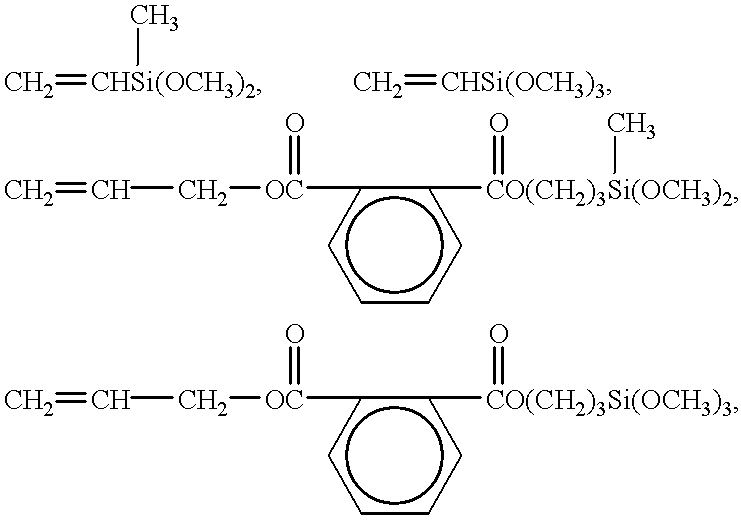Antireflection article
a technology of anti-reflection and article, applied in the field of anti-reflection articles, can solve the problems of deteriorating image contrast, affecting the visual effect of the display, and unable to avoid the blur of images seen by non-glare treatmen
- Summary
- Abstract
- Description
- Claims
- Application Information
AI Technical Summary
Benefits of technology
Problems solved by technology
Method used
Image
Examples
synthesis example 1
(1) In a 3000 ml autoclave, ion-exchanged water (2000 ml) and ammonium perfluorooctanoate (20 g) were charged, and the pressurizing of the autoclave with nitrogen up to 3 kgf / cm.sup.2 G and depressurizing to -0.8 kgf / cm.sup.2 G were repeated twice while stirring. After that, a monomer mixture of perfluoromethyl vinyl ether (PMVE) and tetrafluoroethylene (TFE) in a molar ratio of 70:30 was charged at 50.degree. C. to raise the pressure to 10 kgf / cm.sup.2 G, and then I(CF.sub.2 CF.sub.2).sub.2, (3.6 g) was charged under the pressure of nitrogen gas. Thereafter, the aqueous solution (5 ml) of ammonium persulfate (APS) (0.74 g) was charged under pressure of nitrogen gas. The polymerization reaction was continued until the total amount of the consumed monomers reached 400 g, while maintaining the pressure at 10 kgf / cm.sup.2 G by supplementing the monomer mixture of PMVE and TFE in a molar ratio of 40:60 whenever the internal pressure decreased by 1 kgf / cm.sup.2 G due to the consumption o...
example 1
The polymer 2 was dissolved in butyl acetate to obtain a 5 wt. % solution. A PMMA (polymethyl methacrylate) plate was dip-coated with the solution by dipping the plate in the solution and pulling up the plate at a rate of 20 mm / min.
example 2
The polymer obtained in the step (2) of Synthesis Example 1 was dissolved in butyl acetate to obtain a 3 wt. % solution. This solution was slightly white, and in the form of a non-aqueous dispersion. A PMMA plate was dip-coated with the solution at a pulling-up rate of 2 00 mm / m in.
PUM
| Property | Measurement | Unit |
|---|---|---|
| Fraction | aaaaa | aaaaa |
| Fraction | aaaaa | aaaaa |
| Fraction | aaaaa | aaaaa |
Abstract
Description
Claims
Application Information
 Login to View More
Login to View More - R&D
- Intellectual Property
- Life Sciences
- Materials
- Tech Scout
- Unparalleled Data Quality
- Higher Quality Content
- 60% Fewer Hallucinations
Browse by: Latest US Patents, China's latest patents, Technical Efficacy Thesaurus, Application Domain, Technology Topic, Popular Technical Reports.
© 2025 PatSnap. All rights reserved.Legal|Privacy policy|Modern Slavery Act Transparency Statement|Sitemap|About US| Contact US: help@patsnap.com


